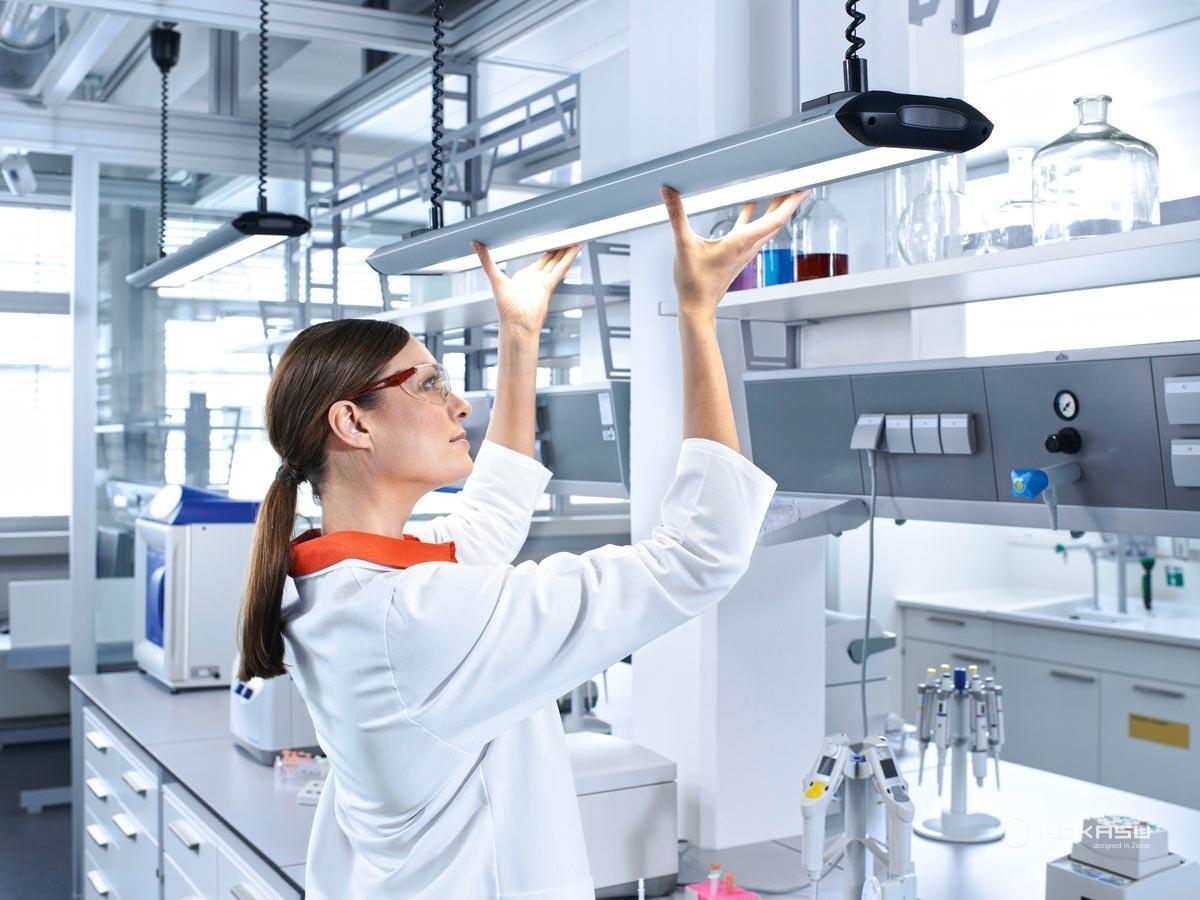Cookies are used for optimal website experience.

Laboratory Lighting
Many modern companies, as well as enterprises and organizations have their own laboratories. Analytical complexes are opened in production for quality control, in research institutes, in medical institutions, in certification and standardization bodies, in schools, etc. Installed equipment, staff qualifications and competent lighting play an important role in the efficiency of the laboratory. For each separate room, it is necessary to develop an individual project, taking into account its direction.
What tasks does lighting in the laboratory solve
As a rule, analytical equipment and fume hoods in laboratory rooms are located along the walls or in even rows with wide aisles. Therefore, it is not necessary to solve the problem of illumination of hard-to-reach areas: there simply are none.
When developing a project, the following features are taken into account:
- The need for additional lighting in fume hoods. Glass and a working person obscure the general light, so separate lamps must be installed inside;
- availability of workplaces with personal computers. These areas have special lighting requirements;
- the specifics of work at each particular place. In laboratories, depending on the type of activity, work is carried out with explosive, flammable, photosensitive substances, etc. The selected devices must provide the necessary level of illumination and at the same time comply with safety standards.
Laboratory lighting requirements
The lighting system in any laboratory must meet the general requirements for the level of illumination of workplaces, without taking into account ergonomics and the specifics of work. To increase the efficiency of the work of employees in the project, it is necessary to additionally take into account the following factors:
- the color rendering index of fixtures must be at least 80;
- pulse factor of light sources - no more than 15%;
- The general lighting of the laboratory should be adjusted in such a way as not to create shadows in the workplaces;
- slight fluctuations in the brightness of the lamps are allowed, without creating discomfort for employees;
- Glare should be between 10% and 40% to reduce staff visual fatigue.
Technological processes in laboratories are high-precision visual operations with the smallest object of distinction of 05–1.0 mm. For workplaces, it is recommended to use natural and artificial light sources in accordance with the requirements of SNiP 23-05-95. The illumination level in analytical laboratories should be from 500 lux. In laboratories of organic and inorganic chemistry, in microscope, photometric, preparatory, spectrographic and other laboratories - from 400 lx.
Laboratory lighting equipment
Lighting fixtures, surface-mounted.
The use of linear schemes is a standard principle for creating lighting in laboratory rooms. The most efficient LED lamps with microprismatic diffusers. Devices are placed parallel to the direction of view to reduce glare.
Surface lamps.
The equipment is built into suspended ceilings and equipped with louvre-type grilles, a perforated screen, and a mirrored inner surface. The devices create the proper level of general illumination of vertical and horizontal surfaces in the laboratory with a small amount of glare, but have a reduced efficiency.
Local lighting.
Direct/indirect light LED devices are built into shelves above laboratory tables. This is a complex scheme that requires a detailed analysis of the direction of the lines of sight and the height of the devices, but the most successful in terms of the level of illumination of workplaces.
HOKASU specialists will help you develop a lighting project for the laboratory and select lamps.
Here's how we create awesome lighting
Application
Please leave your application, and we will contact you to discuss all the details of your project.
It's important for us to consider your preferences.
Project
We will develop a unique concept for a comfortable lighting environment.
We will consider various lighting scenarios and convenient control methods.
Approval
We will address all comments and prepare the final proposal.
We will conduct lighting calculations and prepare all necessary documentation for the builders.
Production
We will manufacture cool luminaires with individual characteristics for you.
Carefully packed, we will deliver all equipment to your site.
Author's Supervision
A specialist from our company will consult your builders.
We will ensure that everything corresponds to the project.
From this moment on, you are in the reliable hands of our service team.